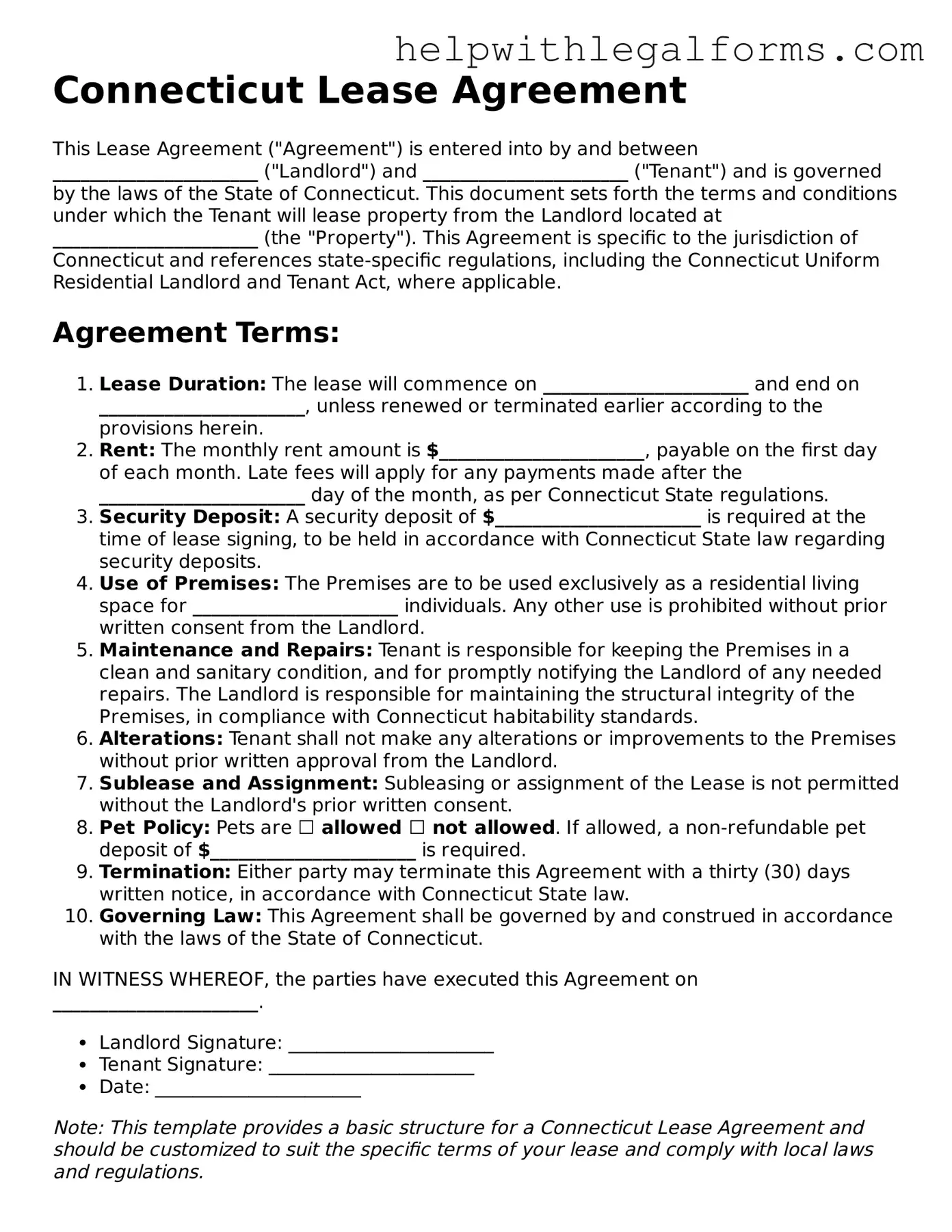What is a Connecticut Lease Agreement form?
A Connecticut Lease Agreement form is a legal document that outlines the terms and conditions between a landlord and tenant for the rental of property in Connecticut. It specifies details such as the duration of the lease, the amount of rent, security deposit requirements, and the rights and responsibilities of both parties.
Do I need a Connecticut Lease Agreement form if I'm renting out property?
Yes, it's highly recommended to have a Connecticut Lease Agreement form if you're renting out property. This document serves as a legally binding contract that can protect both the landlord and the tenant. It ensures that both parties understand their obligations, and it can help to avoid misunderstandings and disputes.
Can I write my own Connecticut Lease Agreement form?
While you can write your own Connecticut Lease Agreement, it's important to ensure that it complies with all relevant state laws and regulations. Many people choose to use a standard form or consult with an attorney to ensure that their lease agreements are comprehensive and legally sound.
What terms should be included in a Connecticut Lease Agreement?
A Connecticut Lease Agreement should include terms such as the names and contact information of the landlord and tenant, the property address, the term of the lease, the monthly rent amount, security deposit details, and policies on pets, late fees, and termination. It should also outline the maintenance and repair obligations of both parties.
How long can a lease agreement last in Connecticut?
In Connecticut, lease agreements can last for any duration agreed upon by the landlord and tenant. Common lease terms include one year or month-to-month agreements. The length of the lease should be clearly stated in the Connecticut Lease Agreement form.
What happens if a tenant breaks a Connecticut Lease Agreement?
If a tenant breaks a Connecticut Lease Agreement, they may be subject to penalties as outlined in the lease, such as forfeiting their security deposit or paying for the remainder of the lease term. The landlord may also have the right to evict the tenant. The specific consequences should be detailed in the lease agreement and must comply with Connecticut's laws on eviction and lease termination.
